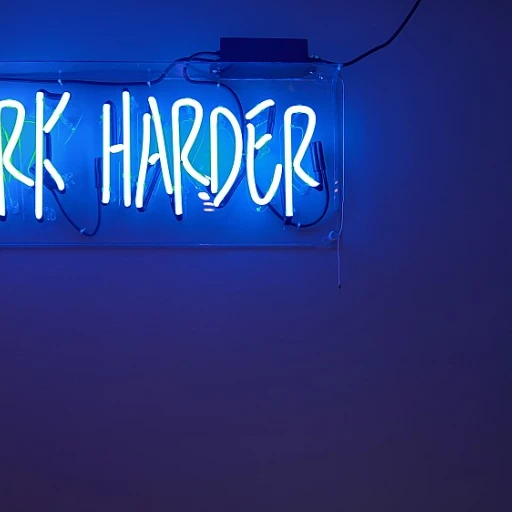
Defining Third-Party Sexual Harassment
Exploring the Concept of External Hostility in Workplaces
Third-party sexual harassment is a term that refers to unwelcome behavior or actions that stem from individuals who are not directly employed by the company, but who interact with employees in the work environment. This can include clients, vendors, customers, or any other party that an employee may encounter during their employment. For employers, understanding the dynamics of third-party harassment is essential in creating a safe and respectful workplace for all employees.
Sexual harassment, whether it comes from within or outside the organization, contributes significantly to a hostile work environment. It affects not only the immediate victims but also the overall morale and productivity of all employees. As businesses aim to foster inclusive and respectful work settings, addressing such issues becomes paramount.
It is important to note that third-party harassment can take many forms, including verbal, physical, or visual harassment. This harassment third party can involve unwanted sexual advances, inappropriate gestures, or discriminatory actions. The business environment must be vigilant in identifying these issues to ensure that the work environment remains conducive to productivity and free from discrimination.
Employers are potentially held liable for third-party harassment that occurs in the workplace if they fail to take appropriate action once they become aware of such incidents. It is crucial for employers to understand their responsibilities under employment law and to implement anti-harassment policies that explicitly address the role of third parties in the workplace. Developing a comprehensive approach also involves educating employees on recognizing and reporting harassment, as well as taking necessary corrective action.
The Role of Background Checks in Identifying Risks
Identifying Risks Associated with Third-Party Sexual Harassment
Background checks have become essential tools for employers aiming to maintain a safe and respectful workplace. When dealing with third-party sexual harassment, these checks can help uncover potential risks associated with various business arrangements—ranging from vendors and independent contractors to clients and customers—who may interact with employees. Although not foolproof, a thorough background check can reveal patterns of inappropriate actions or past allegations of harassment. This proactive measure can significantly reduce the chances of creating a hostile work environment. While background checks are typically associated with vetting potential employees, modern practices have broadened their scope. Employers now assess the conduct and reputational integrity of third parties engaging with their workforce. This comprehensive approach helps identify patterns that might predict the likelihood of harassment in the future. Responsible business practices encourage companies to evaluate any connections they have with third parties throughout the work environment. The evolving employment landscape in areas like California underscores the importance of proactive measures to mitigate legal liability. Employers must ensure their anti-harassment policies include provisions related to third-party interactions. Failure to address such risks may leave employers liable for not taking appropriate action against potential harassment by external parties. By leveraging background checks, businesses can not only attempt to identify potential risks but also protect themselves against possible employment law claims. For a deeper understanding of integrating such measures into your business operations, consider exploring resources on navigating Iowa corporation lookup that provide relevant insights on background check trends.Challenges in Screening for Third-Party Harassment
Navigating the Complexities of Screening for Third-Party Harassment
Background checks are pivotal in identifying potential risks related to third-party sexual harassment in the workplace. However, screening for such behaviors poses several challenges. Employers need to address these complexities to create a safer work environment and mitigate liability risks.
One major obstacle is defining the scope of third-party interactions. Unlike direct employee interactions, these involve external parties like clients, vendors, and customers. Determining the extent of their involvement in potential harassment cases can be intricate.
Moreover, current employer liability standards typically address workplace harassment among employees rather than individuals outside the company. Legal frameworks often require employers to take appropriate action to prevent and respond to documented harassment cases. However, when harassment examples third-party arise, the responsibility becomes blurred, with questions lingering about whether the employer liable under existing employment law.
Incorporating resources like restraining orders can aid in tracking patterns of behavior indicative of a hostile work environment or beneficial for ensuring the diligence of background screening processes. Moreover, while capturing data on past incidents is essential, recent laws in states like California demand additional layers of compliance, especially concerning sexual harassment law.
Employers must navigate these water delicately to ensure comprehensive due diligence. It is imperative to establish a robust anti-harassment policy that not only identifies potential risks during the hiring process but also fortifies ongoing vigilance against all forms of discrimination harassment. This approach ensures a secure and harmonious work environment, ultimately driving business success.
Legal Considerations and Compliance
Legal Aspects and Compliance in Combatting Harassment
Understanding the legal considerations surrounding background checks for third-party sexual harassment is integral to ensuring a safe and compliant work environment. Employment law plays a vital role in shaping how employers screen for harassment risks, aiming to prevent discrimination and provide protection to employees. It's important for businesses to understand their legal obligations to avoid potential liability and ensure corrective action is appropriately taken when needed. One of the primary concerns for employers is discerning the boundaries set by the law, especially in states with stringent anti-harassment regulations like California. Legal frameworks demand that employers undertake reasonable efforts to prevent and respond to workplace harassment, including harassment stemming from third parties. This often entails conducting thorough background checks and maintaining compliance with both federal and state employment laws. Companies must be vigilant to not run afoul of employment law by improperly conducting background checks, risking discriminatory practices. Harassment workplace policies should include comprehensive measures that not only target harassment by fellow employees but also address issues arising from third parties. Employers are often liable when the work environment is deemed hostile due to inappropriate action by any party related to the business. To effectively manage these challenges, it's crucial that businesses stay informed about legal standards and compliance requirements. This includes remaining up-to-date with the legislation governing workplace harassment and ensuring training programs are implemented to foster a harassment-free work environment. By doing so, companies can minimize the risks of legal repercussions while promoting a supportive and respectful culture within the workplace.Best Practices for Employers
Implementing Effective Strategies for Creating a Safe Environment
Employers have a critical role in ensuring a safe and respectful work environment, particularly in preventing and managing workplace harassment. This not only involves understanding the legal ramifications but also implementing effective strategies to handle third-party sexual harassment.
- Conduct Comprehensive Training: Employers should provide training programs that educate employees about recognizing and reporting harassment, including harassment by third parties. These programs help build awareness and understanding, reducing incidents and empowering employees to act appropriately.
- Create Clear Policies: It's crucial to establish comprehensive anti-harassment policies that define unacceptable behavior and outline procedures for addressing grievances. These policies should be communicated clearly to all employees, including any procedures for complaining about harassment from third parties.
- Foster an Open Environment: Encouraging an open-door policy where employees feel safe reporting instances of harassment without fear of retaliation is vital. This helps ensure timely reporting and resolution of incidences.
- Conduct Regular Background Checks: Regular and thorough background checks can be instrumental in identifying potential harassers and preventing their interaction with employees. Screening for past incidents of harassment is an important preventive measure.
- Implement Corrective Action: When instances of workplace harassment occur, swift and decisive corrective action should be taken to address the behavior and support affected employees. Employers should follow the outlined procedures to handle complaints fruitfully.
By making these practices an integral part of the business ethos, employers can mitigate liability and nurture a positive workplace culture. Adopting proactive measures aligns with employment laws and reduces the risk of discrimination or harassment lawsuits.












